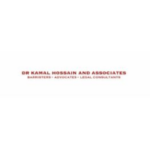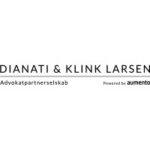-
Is your jurisdiction a common law or civil law jurisdiction?
Switzerland is a civil law jurisdiction.
-
What are the key statutory/legislative obligations relevant to construction and engineering projects?
The key statutory obligations relevant to construction and engineering projects result from both private and public law. Under private law, the Swiss Code of Obligations contains rules applicable to contractor agreements (articles 363 to 379) as well as to agency agreements (articles 394 to 406). Moreover, the general provisions of the Code of Obligations (articles 1 to 183) can also apply with regard to construction and engineering projects. Under public law, relevant provisions can be found in the following areas: zoning/planning laws, construction laws, housing laws, energy laws, environmental laws, labour laws, health and safety laws, etc. These provisions may be edicted at federal, cantonal and/or municipal level, depending on the area of law and on the localization of the relevant asset(s).
Contrary to the public law provisions, private law provisions are mainly of dispositive nature and may be amended by contract between the parties. The SIA rules, a body of private regulations issued by the Swiss Society of Engineers and Architects (“SIA”) concerning technical and legal standards for planning and construction, are often voluntarily included by the parties in their agreements to form an integral part of their contractual relationship. In that case, these regulations will be considered as standard market practice (see question 8).
-
Are there any specific requirements that parties should be aware of in relation to: (a) Health and safety; (b) Environmental; (c) Planning; (d) Employment; and (e) Anti-corruption and bribery.
(a) health and safety;
In terms of health and safety, at the federal level, Swiss labour law as well as Swiss administrative and environmental laws set numerous regulations regarding the protection of workers (equipment, working hours, etc.) and the use, elimination and/or storage on the worksite of toxic materials, asbestos, PCB, leaded paint, chemicals, etc. Specific local regulations should also be taken into account.
For older buildings (in particular those built before 1990), building permits are subject to an asbestos-analysis, and in some Cantons, to a PCB/leaded-paint analysis. In case the building contains asbestos (or PCB/leaded-paints), special requirements for workers must be complied with by the contractor (duty to report, paper trail, special equipment to be used by the workers, etc.). Furthermore, materials considered as hazardous must imperatively be eliminated in authorized waste disposal areas.
Since January 1, 2020, the limitation period for claims for compensation in case of illness or injury due to a breach of health and safety regulations was extended from one year to three years. The dies a quo of the limitation period corresponds to the day on which the injured party became aware of the damage and of the person liable for compensation. With respect to the absolute limitation period, claims for damages or satisfaction in cases of illness or injury are now time-barred after a period of twenty (instead of ten years) from the day on which the harmful conduct occurred or ceased.
As of January 1, 2022, construction work must be planned in such a way that the risk of occupational injury, illness or damage to health is as low as possible. According to the new Construction Work Regulation, the respective measures must now be documented in writing in a safety and health protection concept and included in the contractor agreement.
(b) environmental issues;
Specific federal and/or cantonal regulations apply where the existence of hazardous material and/or pollution of soils is revealed. These rules namely apply to the removal of the polluted materials and to waste management and treatment throughout the construction process. If a plot is registered as a polluted site, the seller must obtain a special authorization in order for the transfer of property to be registered in the Land register.
As of 1 January 2025, the revised Environmental Protection Act, Energy Act and Federal Act on Public Procurement establish a binding legal framework to promote the circular economy and reduce environmental impact and resource use. Key measures include the prioritisation of recycling over incineration and the obligation for Cantons to set grey energy limits for new buildings and major renovations. The Federal Council is empowered to issue standards for resource-efficient construction and sustainability requirements for products and packaging, aligned with EU developments.
(c) planning;
Any construction project must comply with the local (cantonal and/or municipal) planning and zoning regulations. In particular, it must be in line with the permitted use and the construction regulation of the area, which are set out in legal acts and/or in zoning or neighbourhood plans.
(d) employment; and
Swiss law contains provisions in the fields of labour and public law whose objective is the protection of workers and the preservation of their health and safety. Construction sites are regularly inspected by the cantonal authorities, in particular to prevent undeclared work. In the event of a breach, the competent authority can shut down the construction site with immediate effect and impose administrative fines. Constructors must be aware that they may also be liable for violations committed by their subcontractors.
In this context, the employer has to comply with general principles such as the non-discrimination and equity of treatment principles. It is common in practice that collective labour schemes set minimum standards for workers and have to be followed by the employer. There are also mandatory declarations that have to be made in the context of public procurements. In the event of a non-compliance the contractor might be blacklisted.
(e) anti-corruption and bribery.
The standard anti-corruption and bribery regulations of the criminal code apply. For instance, the Swiss Criminal Code criminalises certain forms of corruption in particular with the offences of bribery of public officials (article 322ter and following of the Criminal Code) and bribery of private individuals (article 322octies and following of the Criminal Code). Moreover, the Federal Act on Public Procurement, which has undergone a complete revision effective in 2021, allows to exclude a tenderer who has violated anti-corruption provisions. Such violations furthermore constitute an admissible ground to appeal against an award. On the other hand, there is no dedicated set of rules applicable specifically to the (private) construction sector.
-
What permits, licences and/or other documents do parties need before starting work, during work and after completion? Are there any penalties for non-compliance?
As a rule, construction works can only be initiated after the entry into force of the relevant permits (i.e. building/transformation permit, demolition permit, tree cutting permit, etc.). The necessary permits are governed by local rules and are usually issued by the cantonal or municipal authorities.
During the works, a complementary construction permit may be required if amendments are made to the initial project. Special authorizations will also be required to derogate from the applicable administrative or labour-law related regulations (i.e. extension of the working schedules, night-time or week-end work, etc.).
Depending on the applicable regulations in the relevant canton/municipality and on the type of building constructed, a formal declaration of acceptance by the competent authority, the issuing of an occupancy permit and/or the certification of the work by an architect may be required after the completion of the work.
In the event that the construction does not comply with the construction permit or its specific conditions, the main risk is that the non-compliant part of the work has to be removed and/or altered. The responsible party (be it the employer, the constructor or the architect) may also be sanctioned with a fine. In serious and urgent cases, the authority may even order a construction stop.
-
Is tort law or a law of extra-contractual obligations recognised in your jurisdiction?
Yes, under Swiss law there are several provisions that provide for indemnification obligations without any contractual relationship between the parties involved, as for example the liability for tort (art. 41 CO) and the liability of the property owner for any damage caused by defects in the property (linked to its construction or design or to inadequate maintenance (art. 58 CO)).
-
Who are the typical parties involved in a construction and engineering project?
- The employer
- Architect(s) and other agents involved in planning
- Engineers, if necessary according to the characteristics of the project
- One or several contractor(s) depending on whether the employer decides to have the work performed by a general / total contractor or not
- Construction managers/representatives of the employer
- In some cases, the owner of the plot of land on which the construction is planned to be erected
- The State in the context of major development projects.
-
What are the most popular methods of procurement?
The architect agreement and the general or total contractor agreements are the most popular methods of procurement.
-
What are the most popular standard forms of contract? Do parties commonly amend these standard forms?
In Swiss construction and design contracts, the standard terms issued by SIA are widely used. There are different rules for different types of work. For instance, the SIA rule 118 is relevant for construction contracts, whereas SIA regulations 102 and 103 are used for contracts with architects respectively with construction engineers.
In the context of public procurement, the KBOB (the Co-ordination Conference of the responsible federal and cantonal clients and owners) issued a standard form for general and total contractor agreements. However, it is more and more common for KBOB contracts to be concluded in relation to private projects.
In the international context, the various sets of conditions issued by FIDIC (International Federation of Consulting Engineers) are the most common standard forms.
The parties have to expressly include those regulations in their contract if they want them to be applicable. It is not uncommon that they amend these regulations in order to tailor them to their specific needs, in order to fit the actual construction project or to balance-out standard clauses that may be deemed too favourable to one party.
-
Are there any restrictions or legislative regimes affecting procurement?
With respect to public construction projects, public bodies are subject to the strict regime of public procurements laws and to other special rules.
-
Do parties typically engage consultants? What forms are used?
The larger the construction project, the more common it is that the employer appoints a third party as project manager, whose task is to assist it with respect to the construction works, to follow and supervise the progress of the work and to represent the employer towards the contractor(s) and other parties involved (architect, engineers). The involvement of a project manager is sometimes made necessary by the employer’s internal organisation.
The agreement concluded between the principal and the consultant is usually qualified as an agency contract (mandate) within the meaning of articles 394 to 406 CO. This typically implies that the consultant only has an obligation of means and not of result.
-
Is subcontracting permitted?
Yes. Pursuant to article 364 para. 2 CO, subcontracting is permitted if the nature of the work does not require the personal involvement of the contractor, which is generally the case with respect to construction works. The parties remain however free to exclude or limit the contractor’s right to hire subcontractors. Restrictive clauses commonly found in construction contracts usually concern the right of the employer to propose or impose certain subcontractors (usually associated with an exclusion of liability on the part of the contractor) or the right to refuse certain subcontractors (namely if they don’t fulfil certain specific criteria).
-
How are projects typically financed?
Projects itself are typically financed by construction loans granted by a bank. After the construction is finished, the bank usually converts the entire loan into a mortgage.
Financing by way of mortgages on real estate, usually in the form of mortgage certificates, is also possible. Depending on the type of asset, up to 80 per cent of the real estate’s value may be financed by Swiss banks through mortgages. However, banks generally apply a conservative approach when assessing the value of the real estate.
A combination of a construction loan with a mortgage is often seen these days as well. This way, large amounts, such as the purchase of the real property, can be financed with a mortgage while smaller amounts can be settled through a construction loan.
It must be noted that based on the Basel III standards the revised Capital Adequacy Ordinance came into force on 1 January 2025. In order to take account of the higher risks of loans in connection with properties under construction, a higher risk weighting of 150% is now provided for construction loans and properties under construction. A risk weighting of 100% is only applied to the preferential weighting of residential investment properties with a loan-to-value ratio of less than 70%. Accordingly, banks must deposit more equity capital for the financing of such loans which, in turn, makes such loans more expensive for investors.
In addition to the above-mentioned financing ways it is noteworthy that med-sized to big project could be financially backed by investors.
-
What kind of security is available for employers, e.g. performance bonds, advance payment bonds, parent company guarantees? How long are these typically held for?
Contractor’s securities serve to secure the performance of the contract, down payments or advance payments as well as the contractor’s liability for defects. There are generally two types of securities:
Performance: The contractor usually has to provide the employer with a performance guarantee securing its performance obligations under the contract. The performance guarantee is typically valid until a few months after the final acceptance of the work performed by the contractor.
Warranty: Security for liability for defects. It can either be a bank or insurance guarantee (abstract, irrevocable, payment on first demand without any further justification) or a retention on progress payments to secure the performance of the contract after the acceptance of the work, namely with respect to the employer’s warranty rights. In case a retention is agreed, it is usually set at 10% of the cost of the work.
The security must usually be valid for as long as the employer’s warranty rights exist. The exposure can be limited with a time period within which performance can be improved and reassessed or by requesting back-to-back warranty guarantees to be provided by subcontractors.
-
Is there any specific legislation relating to payment in the industry?
No, there is no specific legislation relating to payment in the industry. However, due to anti-money-laundering rules, the payments made in performance of engineering or construction contracts are usually made via wire transfers through the banks of the parties and are subject to compliance verifications.
-
Are pay-when-paid clauses (i.e clauses permitting payment to be made by a contractor only when it has been paid by the employer) permitted? Are they commonly used?
Although “pay-when-paid” clauses are permitted, they are rarely used in practice. It should be noted in this respect that the employer bears an important risk because a subcontractor which has not been paid by the contractor can request the registration of a legal lien on the plot(s) where the construction is erected. For this reason, it is common for important construction projects to provide for a dedicated construction account subject to the control of the employer.
-
Do your contracts contain retention provisions and, if so, how do they operate?
Retention provisions are common when SIA rules apply, as they provide for a retention amount of 10% of each invoice. The remaining 10% must be paid at the end of the construction (or following a certain period in order to await the expiration of the contractor’s right to request the registration of a legal lien (within four months of the completion of the work) or until the constitution of a new security covering the employer’s warranty rights). Other types of guarantees can also be provided in the contractual agreement.
-
Do contracts commonly contain liquidated delay damages provisions and are these upheld by the courts?
Liquidated delay damages provisions are common in important construction projects. However, they are often difficult to enforce, firstly because according to the law or to the relevant applicable regulations (namely the SIA 118 rules), many circumstances allow for an extension of the contractually agreed deadlines. Such provisions may furthermore be reduced by the courts if they are deemed excessive.
-
Are the parties able to exclude or limit liability?
Parties may exclude their liability for slight negligence, subject to certain exceptions. On the other hand, it should be noted that any agreement purporting to exclude liability for unlawful intent or gross negligence in advance is void.
-
Are there any restrictions on termination? Can parties terminate for convenience? Force majeure?
Under the rules of the Swiss Code of Obligations – which can however be amended by the parties – the possibilities for the parties to terminate the contract before completion of the works are limited. In particular, the contractor may usually only terminate the contract if the completion of the work is rendered impossible because of the employer. However, the employer may in general withdraw from the contract at any time before the work is completed provided it pays for work already done and indemnifies the contractor in full.
As for force majeure, in the absence of a specific “force majeure clause” in the contract, it will often be risky to terminate a contract based on the allegation that an event constitutes force majeure. Specific clauses should therefore be drafted very carefully.
-
What rights are commonly granted to third parties (e.g. funders, purchasers, renters) and, if so, how is this achieved?
Except under special circumstances, Swiss law does not recognize any protective effect for third parties which are not party to a contract. Therefore, no rights are commonly granted to third parties in a construction contract. However, the parties to such a contract remain free to conclude a separate agreement with any relevant third party in order to grant them certain rights in the construction process (namely the right to ask for modifications of the project, the right to participate in the final reception of the works, etc.).
-
Do contracts typically contain strict provisions governing notification of claims for additional time and money which act as conditions precedent to bringing claims? Does your jurisdiction recognise such notices as conditions precedent?
The SIA rules, which are very often included by reference in the parties’ agreements regarding construction projects, provide for strict provisions governing notification of claims for additional time and money. If the contractor fails to notify the employer accordingly, he will lose any corresponding claims against the employer unless he can prove that the employer had knowledge of such circumstances. It should also be noted that according to the general provisions of the Swiss Code of Obligations (which apply if no specific regulations have been adopted by the parties), the contractor must inform the employer immediately of any circumstance which might compromise the correct or timely performance of the works, failing which he himself will be liable for any adverse consequences.
-
What insurances are the parties required to hold? And how long for?
Contractors mainly must hold a civil liability insurance, whose minimum coverage is often defined in the contract. The employer on the other hand must also have a civil liability insurance. At the end of the construction, he is usually responsible for taking up the required insurance coverage for the building itself. It is furthermore common to take up a “construction work” insurance to cover potential damages to the work itself, the premiums for which are often shared equally between the customer and the contractor.
-
How are construction and engineering disputes typically resolved in your jurisdiction (e.g. arbitration, litigation, adjudication)? What alternatives are available?
The parties can freely define the mechanism for dispute resolution. The most commonly used formal dispute resolution mechanism is State court litigation or, more rarely, domestic arbitration, while international contracts often provide for international institutional (SCAI, ICC) or ad hoc arbitration. Moreover, some of the contracts provides for the option resolving the dispute by way of mediation, as a preliminary stage before a civil proceeding or domestic arbitration.
-
How supportive are the local courts of arbitration (domestic and international)? How long does it typically take to enforce an award?
Arbitration clauses are relatively uncommon in contractor agreements, at least when the project involves local actors. Therefore, the local (Swiss) courts are relatively inexperienced when it comes to enforcing construction-related arbitration awards, unless the award simply tends to confirm a financial claim of one of the parties. Due to the territorial jurisdiction of the local courts, provisional measures (injunctive relief) relating to an ongoing construction project (e.g. to establish an expert opinion in the context of future evidence proceedings) will necessarily have to be ordered by the local supporting judge (“juge d’appui”).
-
Are there any limitation periods for commencing disputes in your jurisdiction?
The general rules of the Swiss Code of Obligations pertaining to the statute of limitations apply to claims which could be raised by a party to a construction contract. Unless otherwise provided by law – which is namely the case for claims in connection with work carried out by tradesmen and craftsmen, as well as by employees that are time-barred after five years – contractual claims are time-barred after ten years. On the other hand, claims of the employer regarding defects of an immovable work (warranty claims) against the contractor or any architect or engineer who rendered services in connection with such work are time-barred five years after completion of the work. The limitation exception must however be actively raised by the defendant since it is not examined ex officio by the courts.
It should further be noted that the admissibility of warranty claims requires that the rules applying to the notification of the relevant defects (namely in terms of deadlines) have been strictly followed. Such rules are stringent under the general principles of the Swiss Code of Obligations, although the parties may provide for diverging notice requirements or warranty periods in their contracts.
In 2022, the Federal Council submitted a legislative proposal to ensure that people who buy or build real estate will in the future be better protected in the event of a construction defect.
Currently, employers are required to notify the contractor “without delay” – i.e. within a few days – of any construction defects, at the risk of losing their warranty rights. The Federal Council’s plan is to extend the deadline for reporting building defects, whether apparent or hidden, by 60 days. The proposed law would allow defects to be reported at any time during the limitation period for any newly built or acquired property. In all cases, the owner or purchaser of a property has a duty to minimize damage, and is therefore always encouraged to report defects as soon as possible.
The corresponding draft for an amendment to the Swiss Code of Obligations was adopted by the Federal Assembly with a few adjustments. The referendum period ends in mid-April, after which the Federal Council will determine the date of entry into force of the new provisions.
-
How common are multi-party disputes? How is liability apportioned between multiple defendants? Does your jurisdiction recognise net contribution clauses (which limit the liability of a defaulting party to a “fair and reasonable” proportion of the innocent party’s losses), and are these commonly used?
Multi-party disputes are common in relation to construction projects since such projects often involve several parties. It is therefore important to ensure that the respective contracts provide for the same forum and/or dispute resolution mechanism. If several parties can be held liable towards another party (either on the same or on different grounds), the liability of each of them for the damage will be examined in the light of their individual responsibility under the circumstances and under the contractually agreed rules. Compensation payments are allowed with due regard to the circumstances and the degree of culpability of the corresponding party. Net contribution clauses are not recognised as such by the Swiss Courts, but it should be noted that according to the general provisions of the Swiss Code of Obligations, the court may under some specific circumstances reduce the amount of the compensation awarded to the innocent party.
-
What are the biggest challenges and opportunities facing the construction sector in your jurisdiction?
Faced with a significant slowdown at the beginning of 2023, the Swiss construction sector is facing multiple and complex challenges. Falling orders and revenues (due to high interest rates and inflation), moderate activity forecast for the coming years, and a decline in building permit applications for housing, paint a picture of caution and readjustment. However, it is important to note that, despite these challenges, opportunities do exist, notably through ongoing projects that could revitalize the sector. In particular, there is an increasing expectation towards sustainable construction and circular economy. In order to reach these expectations, it should be taken advantage of the transformation of digitization in the construction industry – which also entails a challenge, however. Tackling sustainability and digitalization in an innovative way may be interesting for companies as both these trends will have a long lasting economic impact. Besides, government subsidies for sustainable projects and new trends in lifestyles and work preferences (collective, sharing, etc.) offer a wide range of new opportunities.
In March 2025, the Swiss National Bank lowered its key interest rate for the fifth time in succession, by 0.25 points to 0.25%. In 2024, prices for condominiums rose by 4.2%, and for detached villas by 3.4%. Given this further fall in interest rates, demand for housing should remain strong, and with supply still low, there is every reason to believe that prices will continue to rise.
By reducing financing costs, lower interest rates make buying a property more attractive. However, tighter regulations are making mortgage lending more costly and complex, especially for large-scale real estate projects.
Real assets such as real estate offer relatively attractive returns, which is why many private and institutional investors are turning to real estate investments. However, real estate development in Switzerland has become a very complex business and there are still many obstacles to construction (oppositions, lack of building land and therefore high costs, lengthy processes, costly procedures, etc.).
Resilience and adaptability will be crucial for players in the Swiss construction industry to navigate this changing environment.
-
What types of project are currently attracting the most investment in your jurisdiction (e.g. infrastructure, power, commercial property, offshore)?
The Swiss real estate market is currently facing growing demand for residential property. On June 1, 2024, there were 51’974 vacant housings in Switzerland, corresponding to 1.08% of the housing market (including single-family homes). The vacancy rate in the major cities is even lower: in Geneva it is 0.46%, while in Zurich it is 0.56%. This excess demand on the real estate market persists, fueled by higher immigration and lower construction activity.
While the negative trend in certain asset classes (in particular retail spaces) and regions will continue, there will be opportunities in other markets such as residential properties in B-locations, logistics and industrial properties, as well as refurbishment projects with strong energetical optimization. Also, in contrast to the situation over the last decade, there has been a recent regain of interest in hospitality.
With respect to office spaces, last year, the commercial real estate market was remarkably buoyant, with numerous rentals and relocations. A number of flexible space providers and private banks experienced growth. Over the course of the year, however, demand declined significantly, although this has not yet had a significant impact on supply trends. The supply of office space is increasing in city centers.
In major urban centers, there has been a recent trend for companies to relocate their offices to the suburbs. The result is a vacancy of office space at a time when there is a shortage of housing. To counter this, the conversion of commercial buildings to residential use is hotly debated. Projects are already underway in a number of cities, including Geneva. Compared to the rest of Europe, vacancy rates for office space in Switzerland remain therefore low.
-
How do you envisage technology affecting the construction and engineering industry in your jurisdiction over the next five years?
The use of digital technologies and tools has started years ago, be it in communication, submissions or drawing of plans and will become more and more important. One model that is increasingly talked about, and which will certainly be needed more in the future, is BIM (Building Information Modeling) – a working technology for the construction industry which enables a collaborative approach to construction project, from design to operation. BIM is the geometric representation in 3D of a building on a computer in order to analyse, steer and simulate specific patterns of behaviour. With this method, the data and information provided by the parties involved in planning a construction project (architects, engineers, technicians, etc) are captured digitally in order to create a single virtual 3D model. BIM is therefore a structured collection of information about an existing or planned building. This establishes a system of data management that offers a high degree of transparency, efficiency and quality, as well as cost and time control across the entire life cycle of a building, until demolition and reuse, recycling, or energy retrieval from its components.
Technology is also gaining importance in the field of building operation (intelligent buildings that increasingly rely on the Internet of Things, data-driven building operation tools, e.g. for optimising energy consumption as well as for the planning and communication of the urban development, construction and virtual reality projects.
However, the digitalisation of the construction industry is giving rise to many challenges particularly in terms of data privacy, which is a growing concern for tenants and building occupants. This method is not very well established in Switzerland yet, and there is no specific legal framework for it at the moment.
Today, the Swiss Contractors’ Association is also observing the integration of AI in the construction industry. Efficiency gains and the chronic shortage of skilled labor will enable AI to play a considerable role in construction in the longer term. In practice, the trend towards automation has been going on for a long time, and the growing use of AI and machine learning is reinforcing and accelerating it. The construction industry is beginning to automate standardized processes, particularly those involving repetitive and monotonous tasks. The efficient management of large amounts of data on construction sites is currently a challenge for construction companies. AI technology offers solutions here, optimizing repetitive and time-consuming processes and thus increasing efficiency. The Swiss Contractors’ Association plays a leading role in promoting digital transformation within the industry.
-
What do you anticipate to be the impact from ongoing supply chain issues and the escalation of material costs over the coming year?
Switzerland imports most of its building materials. It is therefore heavily impacted by supply chain issues and the escalation of material costs.
As a corollary to the shortage, salaries are set to rise by 1.4% in 2025, to which must be added the cost of certain materials, which is also continuing to rise. All this has an impact on companies’ profit margins and on the final price of construction. The same goes for the industry’s acute manpower shortage.
This is particularly the case when it comes to energy efficiency work. Switzerland is facing a shortage of resources, both in terms of materials and manpower in this field.
However, there is a boom in requests for building renovation work and the implementation of energy-saving measures (solar panels, etc.). This is the result of incentives provided by the State, either through subsidies or legislation requiring certain buildings to be renovated.
In 2025, given the current geopolitical risks (war in Ukraine and the Middle East) supply chain challenges and escalating material costs will continue to weigh heavily on the Swiss construction sector. This will lead to cost increases, project delays, reduced competitiveness and an increased need for innovation to manage these pressures. Companies will have to adapt by optimizing their processes, investing in sustainable technologies and finding new solutions to meet growing demand while remaining profitable.
Switzerland: Construction
This country-specific Q&A provides an overview of Construction laws and regulations applicable in Switzerland.
-
Is your jurisdiction a common law or civil law jurisdiction?
-
What are the key statutory/legislative obligations relevant to construction and engineering projects?
-
Are there any specific requirements that parties should be aware of in relation to: (a) Health and safety; (b) Environmental; (c) Planning; (d) Employment; and (e) Anti-corruption and bribery.
-
What permits, licences and/or other documents do parties need before starting work, during work and after completion? Are there any penalties for non-compliance?
-
Is tort law or a law of extra-contractual obligations recognised in your jurisdiction?
-
Who are the typical parties involved in a construction and engineering project?
-
What are the most popular methods of procurement?
-
What are the most popular standard forms of contract? Do parties commonly amend these standard forms?
-
Are there any restrictions or legislative regimes affecting procurement?
-
Do parties typically engage consultants? What forms are used?
-
Is subcontracting permitted?
-
How are projects typically financed?
-
What kind of security is available for employers, e.g. performance bonds, advance payment bonds, parent company guarantees? How long are these typically held for?
-
Is there any specific legislation relating to payment in the industry?
-
Are pay-when-paid clauses (i.e clauses permitting payment to be made by a contractor only when it has been paid by the employer) permitted? Are they commonly used?
-
Do your contracts contain retention provisions and, if so, how do they operate?
-
Do contracts commonly contain liquidated delay damages provisions and are these upheld by the courts?
-
Are the parties able to exclude or limit liability?
-
Are there any restrictions on termination? Can parties terminate for convenience? Force majeure?
-
What rights are commonly granted to third parties (e.g. funders, purchasers, renters) and, if so, how is this achieved?
-
Do contracts typically contain strict provisions governing notification of claims for additional time and money which act as conditions precedent to bringing claims? Does your jurisdiction recognise such notices as conditions precedent?
-
What insurances are the parties required to hold? And how long for?
-
How are construction and engineering disputes typically resolved in your jurisdiction (e.g. arbitration, litigation, adjudication)? What alternatives are available?
-
How supportive are the local courts of arbitration (domestic and international)? How long does it typically take to enforce an award?
-
Are there any limitation periods for commencing disputes in your jurisdiction?
-
How common are multi-party disputes? How is liability apportioned between multiple defendants? Does your jurisdiction recognise net contribution clauses (which limit the liability of a defaulting party to a “fair and reasonable” proportion of the innocent party’s losses), and are these commonly used?
-
What are the biggest challenges and opportunities facing the construction sector in your jurisdiction?
-
What types of project are currently attracting the most investment in your jurisdiction (e.g. infrastructure, power, commercial property, offshore)?
-
How do you envisage technology affecting the construction and engineering industry in your jurisdiction over the next five years?
-
What do you anticipate to be the impact from ongoing supply chain issues and the escalation of material costs over the coming year?



















